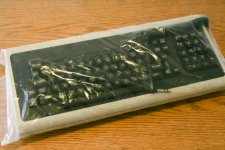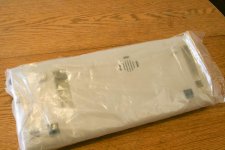leaknoil
Experienced Member
I recently picked up this new VT100 keyboard but, I'm not sure what its from. Its doesn't say Digital anywhere on it and has a HOME/CLR key next to the arrow keys that doesn't seem to be on any vt100 pictures I found. Only marking is a sticker with a serial number on the bottom.
Anyone know what it might be from ?


Anyone know what it might be from ?


